Search Result
Results for "
classical
" in MedChemExpress (MCE) Product Catalog:
1
Isotope-Labeled Compounds
| Cat. No. |
Product Name |
Target |
Research Areas |
Chemical Structure |
-
- HY-Y0641
-
-

-
- HY-W010104
-
|
H-Met(O)-OH
|
Endogenous Metabolite
|
Metabolic Disease
|
|
L-Methionine sulfoxide (H-Met(O)-OH), a metabolite of Methionine, induces M1/classical macrophage polarization, and modulates oxidative stress and purinergic signaling parameters .
|
-
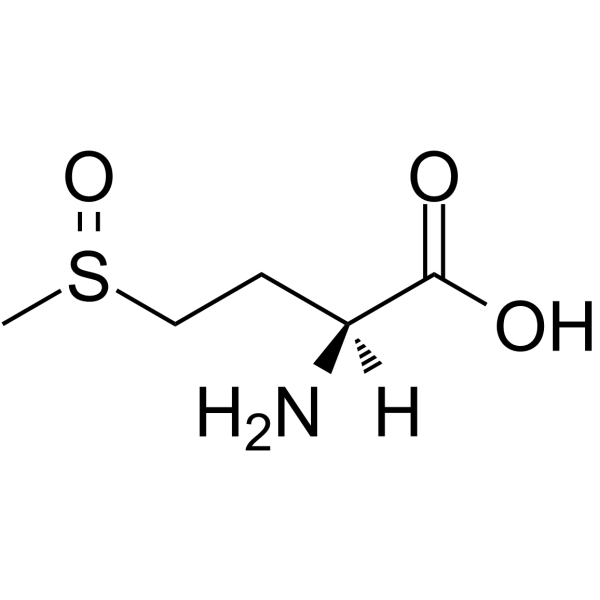
-
- HY-U00155
-
|
NSC172112; NSC268497
|
DNA Alkylator/Crosslinker
|
Cancer
|
|
NCI172112 is a classical bifunctional alkylating agent synthesized in an effort to develop antitumor agents effective against CNS tumors.
|
-

-
- HY-P1436
-
|
|
HIV
|
Infection
|
|
Acetyl-pepstatin is a potent classical inhibitor of aspartic proteases (PRs) with XMRV PR and HIV-1 PR Ki values of 712 nM and 13 nM .
|
-
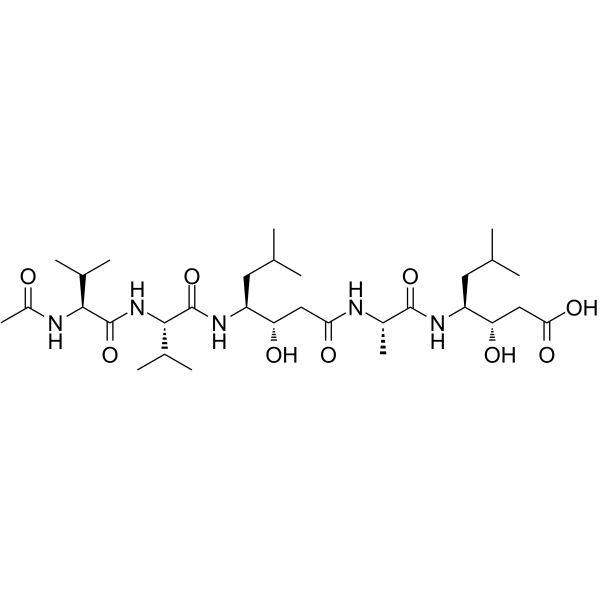
-
- HY-N10104
-
|
|
Complement System
|
Inflammation/Immunology
|
|
Citrostadienol is a steroid compound with anti-inflammatory and anticomplementary activities. Citrostadienol demonstrates inhibition activities on classical complement pathway (IC50 of 46 nM) .
|
-
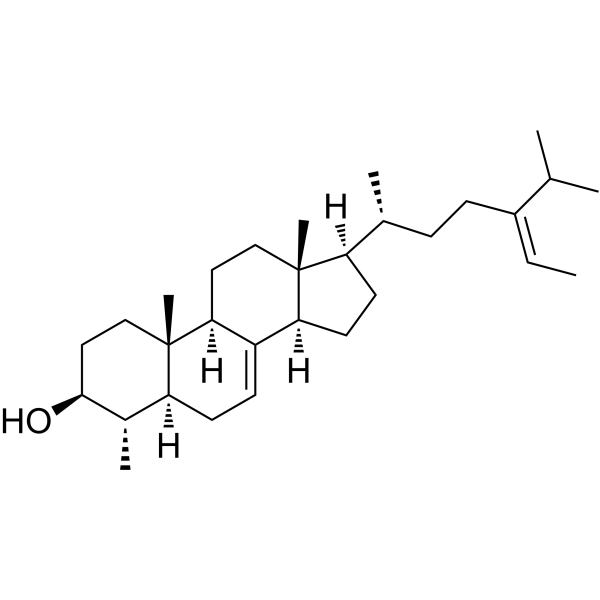
-
- HY-113435
-
-
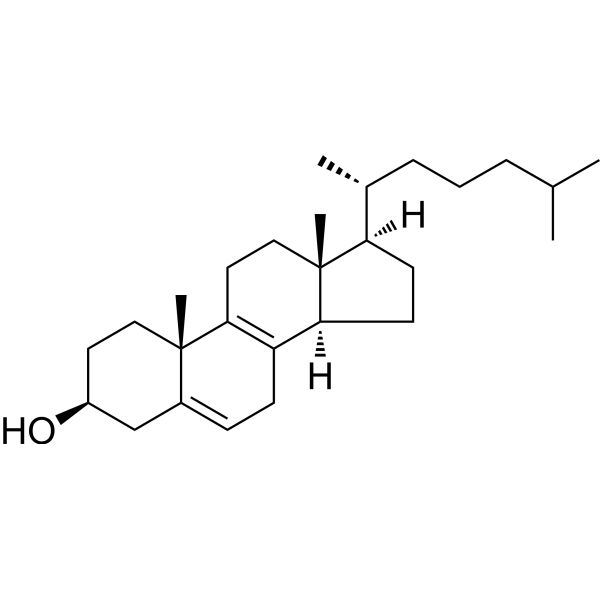
-
- HY-P0216
-
-
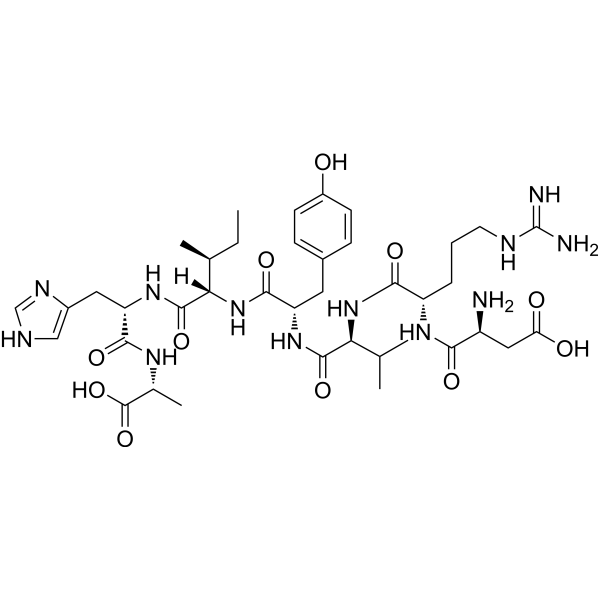
-
- HY-P99965
-
|
SKY59; RO7112689
|
Complement System
|
Cardiovascular Disease
Metabolic Disease
|
|
Crovalimab (SKY59; RO7112689) is a novel humanized antibody against C5 in a pH-dependent manner with KDs of 15.2 nM and 16.8 μM at pH 7.4 and 5.8, respectively. Crovalimab binds human FcRn with great affinity (KD: 17 μM at pH 6.0). Crovalimab can block cleavage of C5 by the C5 convertase and inhibite the activity of a C5 variant (p.Arg885His). Crovalimab inhibits C5b-9 formation significantly in all three complement pathways, the classical pathway (CP), lectin pathway (LP), and alternative pathway (AP). Crovalimab has the potential for paroxysmal nocturnal hemoglobinuria (PNH) and complement-mediated diseases research .
|
-

-
- HY-P990091
-
|
SAR 445088
|
Complement System
|
Inflammation/Immunology
|
|
Riliprubart (SAR445088) is an anti-C1s humanized monoclonal antibody that inhibits activated C1s in the proximal portion of the classical complement system. Riliprubart selectively inhibits activated C1s and prevents the enzymatic action of C1 on its substrates C4 and C2, thus inhibiting the formation of the classical pathway C3 convertase, C4b2a .
|
-

-
- HY-N12265
-
|
|
Others
|
Inflammation/Immunology
|
|
Versicolactone B is a sesquiterpene that can be isolated from Viola yedoensis. Versicolactone B exhibits anti-complement activity against the classical pathway and the alternative pathway .
|
-
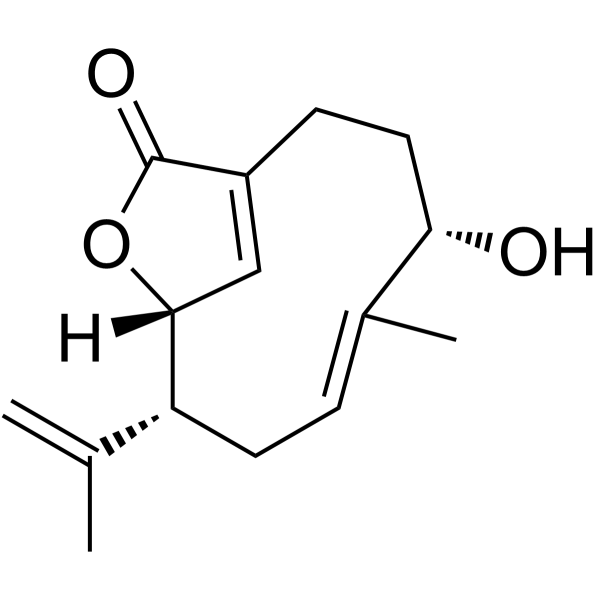
-
- HY-146753
-
|
|
HIV
|
Infection
|
|
HIV-1 inhibitor-20 is a potent HIV-1 inhibitor by non-classical isosteric replacement of amide to 1,2,4-oxadiazoles .
|
-
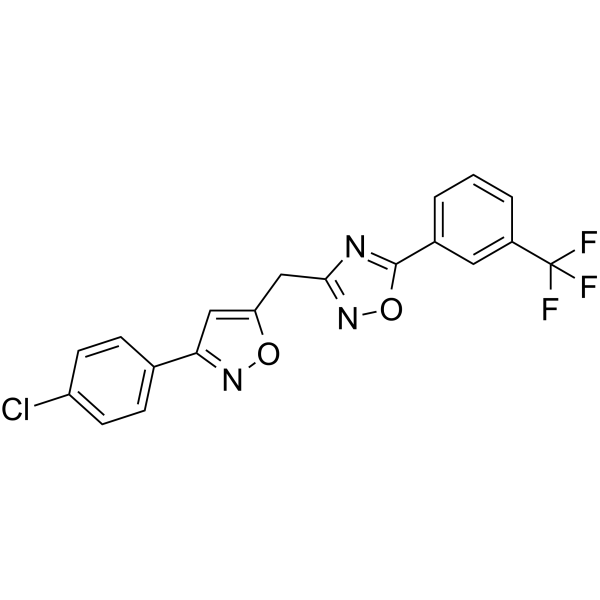
-
- HY-108605
-
|
|
Pim
|
Cancer
|
|
PIM1-IN-2 is a potent and ATP competitive Pim-1 inhibitor with a Ki of 91 nM. PIM1-IN-2 targets the ATP-binding kinase hinge region not by forming classical hydrogen bonds .
|
-
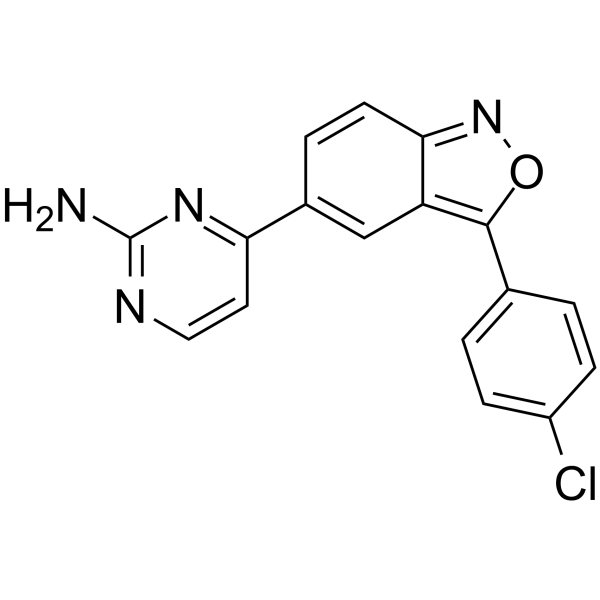
-
- HY-131768
-
|
|
Cholinesterase (ChE)
|
Others
|
|
2'-O-Succinyl-cAMP is a cAMP analog that can be covalently coupled to acetylcholinesterase. 2'-O-Succinyl-cAMP conjugate has been used as tracers in a classical heterogeneous competitive enzyme immunoassay allowing the determination of cAMP .
|
-
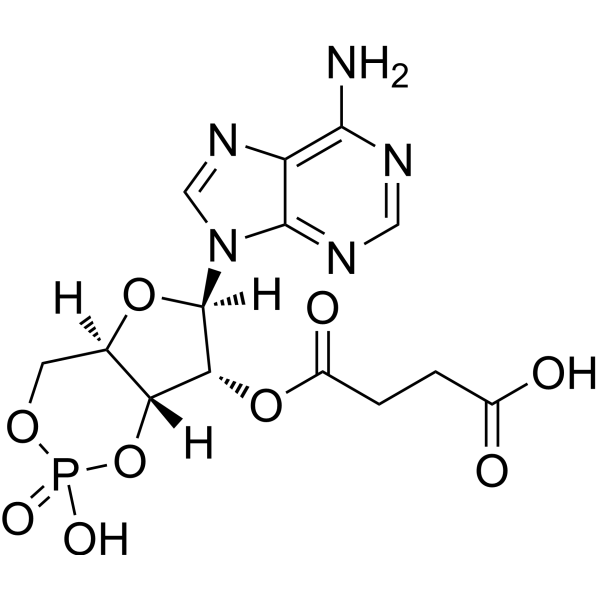
-
- HY-145686
-
|
|
Others
|
Inflammation/Immunology
|
|
AV023 is a potent inhibitor of ANKRD22. AV023 promotes the expansion of gastrointestinal mucosal epithelial stem cells and indirectly activates the Wnt classical pathway, which helps the recovery of damaged gastrointestinal mucosal tissues in the body (extracted from patent CN111205231B) .
|
-
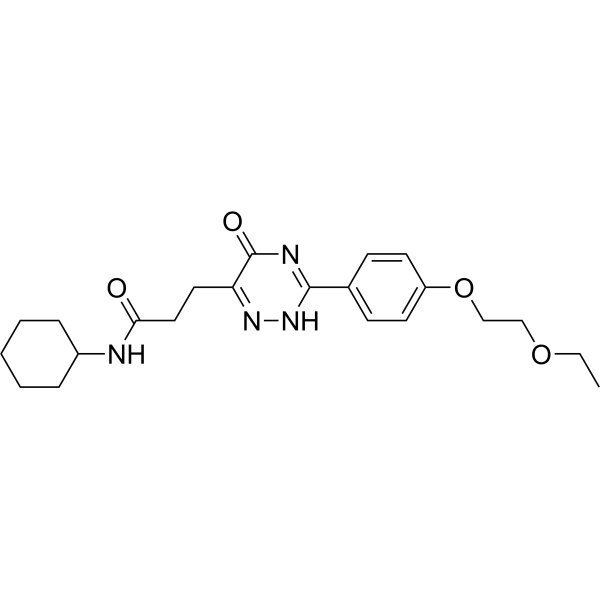
-
- HY-113410
-
|
|
Endogenous Metabolite
|
Metabolic Disease
|
|
3-Methylglutaric acid, a leucine metabolite, is a conspicuous C6 dicarboxylic organic acid classically associated with two distinct leucine pathway enzyme deficiencies, 3-hydroxy-3-methylglutaryl CoA lyase (HMGCL) and 3-methylglutaconyl CoA hydratase (AUH) .
|
-
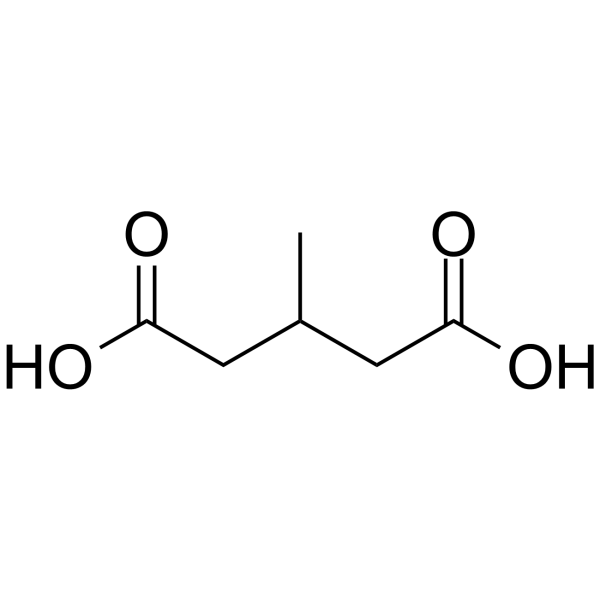
-
- HY-123410
-
|
|
Cannabinoid Receptor
|
Cancer
|
|
KM-233 is a classical cannabinoid with good blood brain barrier penetration. KM-233 possesses a selective affinity for the CB2 receptors relative to THC. KM-233 is effective at reducing U87 glioma tumor burden, and can be used for glioma research .
|
-

-
- HY-163399
-
|
|
Bacterial
|
Infection
|
|
Antibacterial agent 197 (compound 1-deAA) is a termination inhibitor of non-classical anhydroglycosyl receptors and anhydrowall peptide-type peptidoglycan (PG) in bacterial TGase, with activity against Staphylococcus aureus. Antibacterial agent 197 synergizes with Vancomycin (HY-B0671) and is its antibacterial adjuvant .
|
-
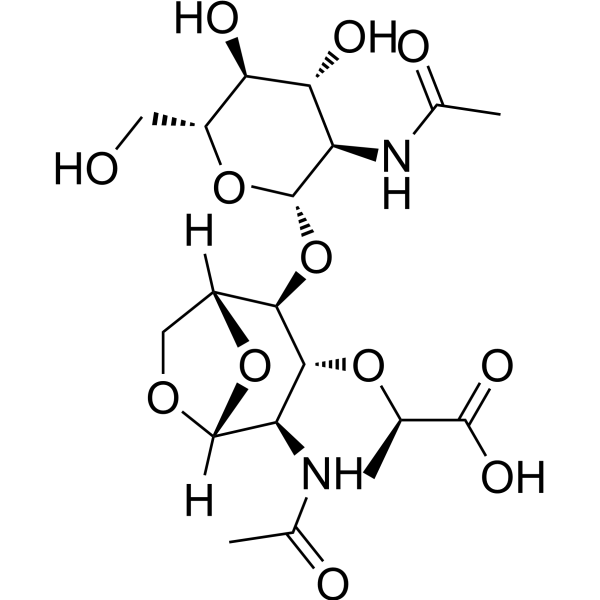
-
- HY-120548
-
|
|
HSP
|
Cancer
|
|
KBU2046 is an oral, highly selective inhibitor of cell motility and cell invasion in vitro. KBU2046 binds chaperone heterocomplexes, selectively alters binding of client proteins that regulate motility, and lacks all of the hallmarks of classical HSP90 inhibitors. KBU2046 inhibits cancer metastasis and prolongs life .
|
-

-
- HY-101884
-
|
(+)-Biocytin
|
Endogenous Metabolite
|
Neurological Disease
|
|
Biocytin is a conjugate of D-biotin and L-lysine, where the carboxylate of D-biotin is coupled with the ϵ-amine of L-lysine via a secondary amide bond. Biocytin is a classical neuroanatomical tracer commonly used to map brain connectivity. Biocytin is used as a versatile marker in anterograde, retrograde and intracellular neuroanatomical investigations and in biotinidase assays .
|
-
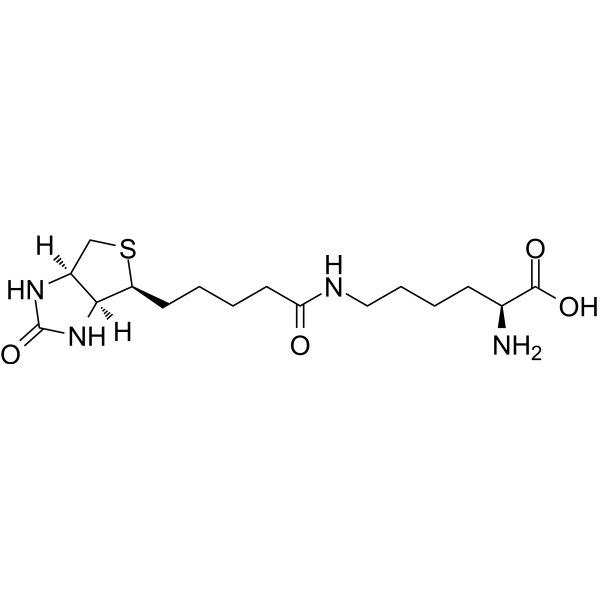
-
- HY-D0215
-
|
Safranine T
|
Fluorescent Dye
|
Others
|
|
Safranin (Safranin T) is an important and classical phenazinium dye. Safranin has been extensively used in the academic field as a spectroscopic probe and indicator. Safranin possesses a planar structure and cationic charge. It can readily intercalate into biological macromolecules, including DNA and proteins. Safranin can be used as a redox indicator in the determination of metal ion concentration .
|
-
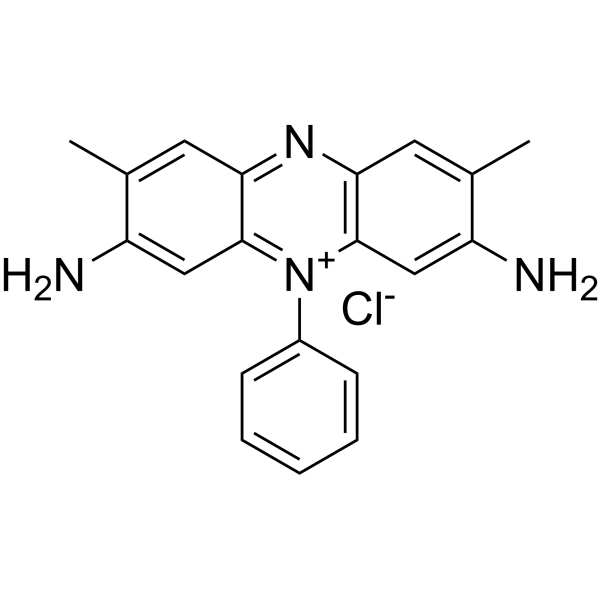
-
- HY-W088068
-
|
|
Fluorescent Dye
|
Others
|
|
Wright's stain is a hematologic stain that facilitates the differentiation of blood cell types. Wright's stain is classically a mixture of eosin (red) and methylene blue dyes. It is used primarily to stain peripheral blood smears, urine samples, and bone marrow aspirates. Wright's stain provides a manual or automated stain for bone marrow and peripheral blood smears .
|
-

-
- HY-D1330
-
|
|
Fluorescent Dye
|
Others
|
|
BDP R6G azide is an anlong of BDP dye. BDP R6G azide is available that are tuned to match excitation and emission channels of classical xanthene and cyanine dyes. BDP R6G azide can be used in copper-catalyzed Click chemistry reactions with alkynes, DBCO and BCN. (λex=530 nm, λem=548 nm) .
|
-

-
- HY-146189
-
|
|
Topoisomerase
Apoptosis
|
Cancer
|
|
Topoisomerase II inhibitor 9 (Compound 19b) is a Topo II inhibitor with an IC50 of 0.97 μM. Topoisomerase II inhibitor 9 is also a classical DNA-intercalator with an IC50 of 43.51 μM. Topoisomerase II inhibitor 9 arrests the cell cycle at the G2/M phase and induces apoptosis in Hep G‐2 cells .
|
-

-
- HY-N2996
-
|
|
HIV Protease
|
Infection
|
|
Ganodermanondiol is a melanogenesis inhibitor isolated from the Ganoderma lucidum .Ganodermanondiol exhibits potent cytoprotective effects on tert-butyl hydroperoxide-induced hepatotoxicity . Ganodermanondiol shows significant anti-HIV-1 protease activity with an IC50 of 90 μM . Ganodermanondiol exhibits a strong anticomplement activity against the classical pathway of the complement system with an IC50 of 41.7μM .
|
-
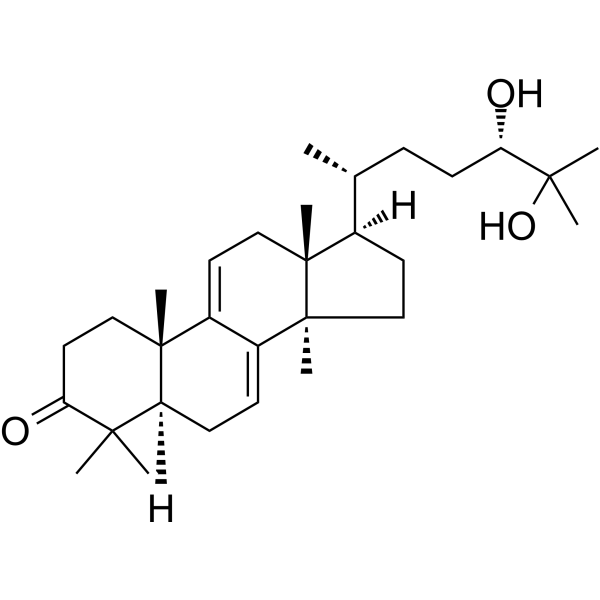
-
- HY-147736
-
|
|
GABA Receptor
|
Neurological Disease
|
|
GABAA receptor agonist 2 (compound 4c) is a potent GABAA receptor agonist. GABAA receptor agonist 2 shows anti-depression activities in classical mouse models of depression of FST and TST. GABAA receptor agonist 2 binds at the GABA binding site of GABAA receptor in order to produce GABAergic effects. GABAA receptor agonist 2 has the potential for the research of depression .
|
-
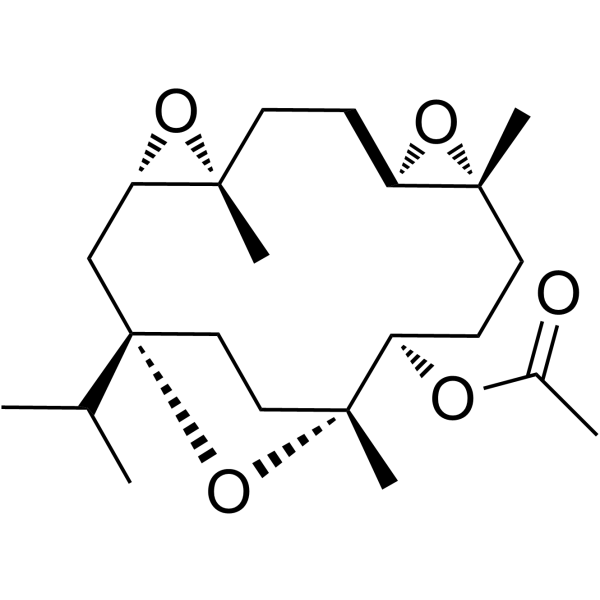
-
- HY-147735
-
|
|
GABA Receptor
|
Neurological Disease
|
|
GABAA receptor agonist 1 (compound 3e) is a potent GABAA receptor agonist. GABAA receptor agonist 1 shows anti-depression activities in classical mouse models of depression of FST and TST. GABAA receptor agonist 1 binds at the GABA binding site of GABAA receptor in order to produce GABAergic effects. GABAA receptor agonist 1 has the potential for the research of depression .
|
-

-
- HY-P5469
-
|
|
Formyl Peptide Receptor (FPR)
|
Others
|
|
WRW4-OH is a biological active peptide. (This peptide inhibits binding of one of formyl peptide receptor-like 1 (FPRL1) agonists WKYMVm to its specific receptor. FPRL1 is an important classical chemoattractant receptor that is expressed in phagocytic cells in the peripheral blood and brain. Activation of FPRL1 is closely related to inflammatory responses in the host defense mechanism and neurodegenerative disorders.)
|
-
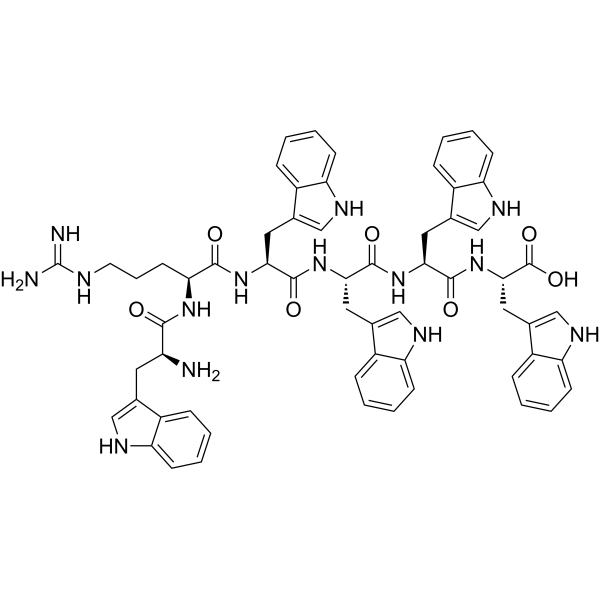
-
- HY-P1036
-
|
|
Complement System
|
Others
|
|
Compstatin, a 13-residue cyclic peptide, is a potent inhibitor of the complement system C3 with species specificity. Compstatin binds to baboon C3 and is resistant to proteolytic cleavage in baboon blood (similar to humans). Compstatin inhibits only the activation of primates’ complement system. Compstatin exhibits IC50 values of 63 μM and 12 μM for classical and alterative complement pathway, respectively .
|
-

-
- HY-117800
-
|
B106
|
PKC
Apoptosis
|
Inflammation/Immunology
Cancer
|
|
BJE6-106 (B106) is a potent, selective 3 rd generation PKCδ inhibitor with an IC50 of 0.05 μM and targets selectivity over classical PKC isozyme PKCα (IC50=50 μM). BJE6-106 (B106) induces caspase-dependent apoptosis. BJE6-106 (B106) possesses tumor-specific effect.
|
-

-
- HY-P1036A
-
|
|
Complement System
|
Others
|
|
Compstatin TFA, a 13-residue cyclic peptide, is a potent inhibitor of the complement system C3 with species specificity. Compstatin TFA binds to baboon C3 and is resistant to proteolytic cleavage in baboon blood (similar to humans). Compstatin TFA inhibits only the activation of primates’ complement system. Compstatin TFA exhibits IC50 values of 63 μM and 12 μM for classical and alterative complement pathway, respectively .
|
-

-
- HY-P99048
-
|
IBI308
|
PD-1/PD-L1
|
Inflammation/Immunology
Cancer
|
|
Sintilimab (IBI308) is a fully human IgG4 monoclonal antibody that binds to PD-1, thereby blocking the interaction of PD-1 with its ligands (PD-L1 and PL-L2) and consequently helping to restore the endogenous antitumour T-cell response. Sintilimab can be used for the research of classical Hodgkin's lymphoma, non-small cell lung cancer and oesophageal cancer .
|
-

-
- HY-113410S
-
|
|
Endogenous Metabolite
|
Metabolic Disease
|
|
3-Methylglutaric acid-d4 is the deuterium labeled 3-Methylglutaric acid[1]. 3-Methylglutaric acid, a leucine metabolite, is a conspicuous C6 dicarboxylic organic acid classically associated with two distinct leucine pathway enzyme deficiencies, 3-hydroxy-3-methylglutaryl CoA lyase (HMGCL) and 3-methylglutaconyl CoA hydratase (AUH)[2][3].
|
-
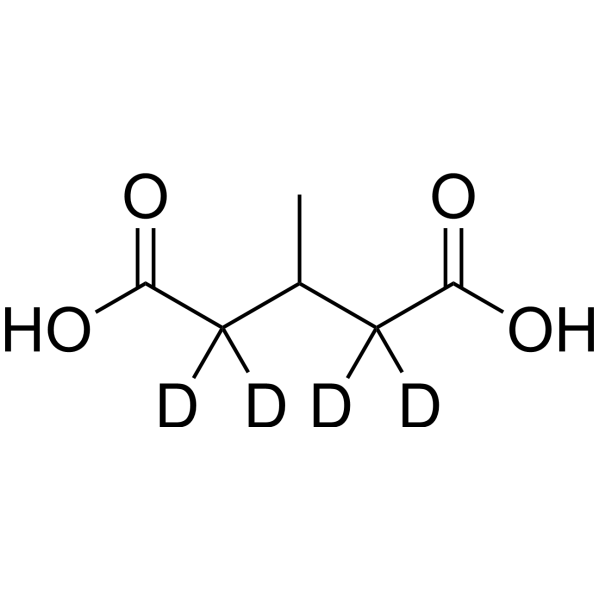
-
- HY-11052A
-
|
|
Opioid Receptor
|
Neurological Disease
|
|
Trap-101 hydrochloride is a potent, selective and competitive antagonist of NOP receptors over classical opioid receptors. Trap-101 stimulates GTPγ 35S binding to CHOhNOP membranes with pKi values of 8.65, 6.60, 6.14 and <5 for NOP, μ-, κ-, and δ-opioid receptors, respectively. Trap-101 attenuates motor deficits in a rat model of parkinson's disease and can be used for the research of nervous system diseases .
|
-
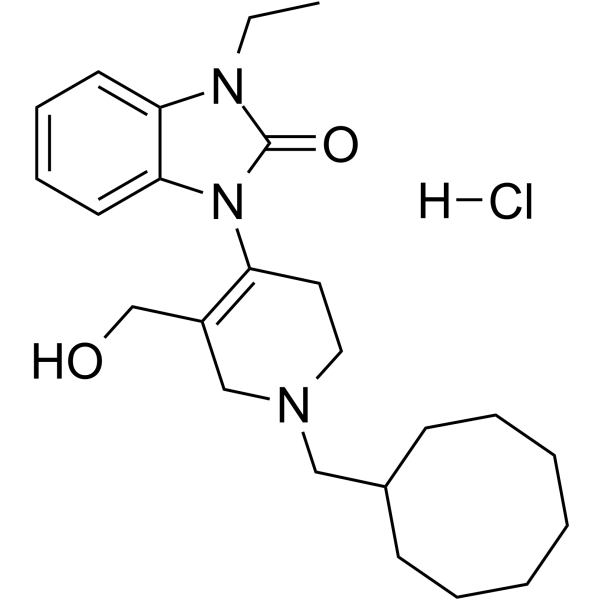
-
- HY-155851
-
|
|
Ferroptosis
MDM-2/p53
Glutathione Peroxidase
|
Cancer
|
|
Lepadin E is a significantly cytotoxic ferroptosis inducer that induces iron death through the classical p53-SLC7A11-GPX4 pathway. Lepadin E promoted p53 expression, decreases SLC7A11 and GPX4 levels, and leads to increased ROS and lipid peroxide production, and upregulated ACSL4 expression, thus causes cell death. Lepadin E has significant antitumor effect .
|
-
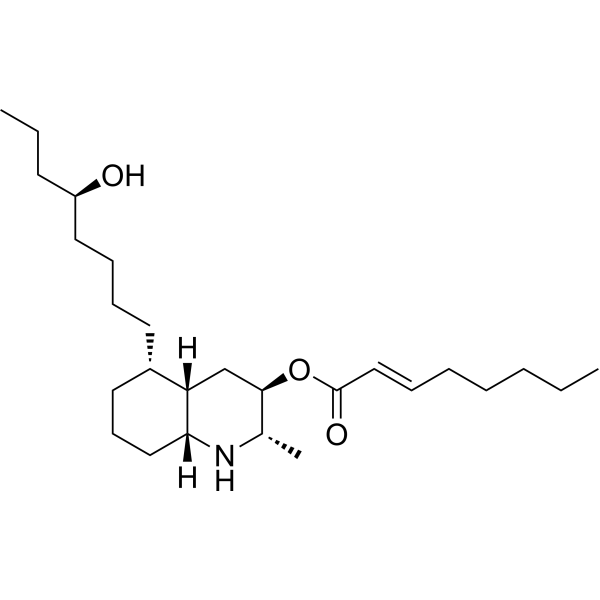
-
- HY-P99109
-
|
GLS-010; AB-122; WBP-3055
|
PD-1/PD-L1
|
Cancer
|
|
Zimberelimab (GLS-010) is a fully human IgG4 anti-PD-1 monoclonal antibody with an EC50 of 210 pM for human PD-1. Zimberelimab effectively blocks the binding of PD-L1 and PD-L2 to cell-surface PD-1 in CHO-S cells, with IC50 values of 580 pM and 670 pM, respectively. Zimberelimab shows antitumor activities, and can be used for various cancers research, including cervical cancer, non-small cell lung cancer and classical Hodgkin’s lymphoma .
|
-

| Cat. No. |
Product Name |
Type |
-
- HY-D0215
-
|
Safranine T
|
Dyes
|
|
Safranin (Safranin T) is an important and classical phenazinium dye. Safranin has been extensively used in the academic field as a spectroscopic probe and indicator. Safranin possesses a planar structure and cationic charge. It can readily intercalate into biological macromolecules, including DNA and proteins. Safranin can be used as a redox indicator in the determination of metal ion concentration .
|
-
- HY-W088068
-
|
|
Dyes
|
|
Wright's stain is a hematologic stain that facilitates the differentiation of blood cell types. Wright's stain is classically a mixture of eosin (red) and methylene blue dyes. It is used primarily to stain peripheral blood smears, urine samples, and bone marrow aspirates. Wright's stain provides a manual or automated stain for bone marrow and peripheral blood smears .
|
-
- HY-D1330
-
|
|
Fluorescent Dyes/Probes
|
|
BDP R6G azide is an anlong of BDP dye. BDP R6G azide is available that are tuned to match excitation and emission channels of classical xanthene and cyanine dyes. BDP R6G azide can be used in copper-catalyzed Click chemistry reactions with alkynes, DBCO and BCN. (λex=530 nm, λem=548 nm) .
|
| Cat. No. |
Product Name |
Target |
Research Area |
-
- HY-P0216
-
-
- HY-P0238
-
|
|
Peptides
|
Cancer
|
|
Gastrin-Releasing Peptide, human (GRP) belongs to the bombesin-like peptide family, and is not a classical hypothalamic-hypophyseal regulatory hormone since it plays only a perfunctory role in the mediation of pituitary hormone release.
|
-
- HY-P4486
-
|
|
Peptides
|
Others
|
|
H-Pro-Gly-Pro-OH is a collagen-derived matrikine that has classically been described as a neutrophil chemoattractant. H-Pro-Gly-Pro-OH is perfectly positioned to focus neutrophils on the site required and direct a localized repair response. H-Pro-Gly-Pro-OH activates the transcription of neurotrophins and their receptor genes after cerebral ischemia .
|
-
- HY-P1436
-
|
|
HIV
|
Infection
|
|
Acetyl-pepstatin is a potent classical inhibitor of aspartic proteases (PRs) with XMRV PR and HIV-1 PR Ki values of 712 nM and 13 nM .
|
-
- HY-P5469
-
|
|
Formyl Peptide Receptor (FPR)
|
Others
|
|
WRW4-OH is a biological active peptide. (This peptide inhibits binding of one of formyl peptide receptor-like 1 (FPRL1) agonists WKYMVm to its specific receptor. FPRL1 is an important classical chemoattractant receptor that is expressed in phagocytic cells in the peripheral blood and brain. Activation of FPRL1 is closely related to inflammatory responses in the host defense mechanism and neurodegenerative disorders.)
|
-
- HY-P1036
-
|
|
Complement System
|
Others
|
|
Compstatin, a 13-residue cyclic peptide, is a potent inhibitor of the complement system C3 with species specificity. Compstatin binds to baboon C3 and is resistant to proteolytic cleavage in baboon blood (similar to humans). Compstatin inhibits only the activation of primates’ complement system. Compstatin exhibits IC50 values of 63 μM and 12 μM for classical and alterative complement pathway, respectively .
|
-
- HY-P1036A
-
|
|
Complement System
|
Others
|
|
Compstatin TFA, a 13-residue cyclic peptide, is a potent inhibitor of the complement system C3 with species specificity. Compstatin TFA binds to baboon C3 and is resistant to proteolytic cleavage in baboon blood (similar to humans). Compstatin TFA inhibits only the activation of primates’ complement system. Compstatin TFA exhibits IC50 values of 63 μM and 12 μM for classical and alterative complement pathway, respectively .
|
| Cat. No. |
Product Name |
Target |
Research Area |
-
- HY-P99965
-
|
SKY59; RO7112689
|
Complement System
|
Cardiovascular Disease
Metabolic Disease
|
|
Crovalimab (SKY59; RO7112689) is a novel humanized antibody against C5 in a pH-dependent manner with KDs of 15.2 nM and 16.8 μM at pH 7.4 and 5.8, respectively. Crovalimab binds human FcRn with great affinity (KD: 17 μM at pH 6.0). Crovalimab can block cleavage of C5 by the C5 convertase and inhibite the activity of a C5 variant (p.Arg885His). Crovalimab inhibits C5b-9 formation significantly in all three complement pathways, the classical pathway (CP), lectin pathway (LP), and alternative pathway (AP). Crovalimab has the potential for paroxysmal nocturnal hemoglobinuria (PNH) and complement-mediated diseases research .
|
-
- HY-P990091
-
|
SAR 445088
|
Complement System
|
Inflammation/Immunology
|
|
Riliprubart (SAR445088) is an anti-C1s humanized monoclonal antibody that inhibits activated C1s in the proximal portion of the classical complement system. Riliprubart selectively inhibits activated C1s and prevents the enzymatic action of C1 on its substrates C4 and C2, thus inhibiting the formation of the classical pathway C3 convertase, C4b2a .
|
-
- HY-P99048
-
|
IBI308
|
PD-1/PD-L1
|
Inflammation/Immunology
Cancer
|
|
Sintilimab (IBI308) is a fully human IgG4 monoclonal antibody that binds to PD-1, thereby blocking the interaction of PD-1 with its ligands (PD-L1 and PL-L2) and consequently helping to restore the endogenous antitumour T-cell response. Sintilimab can be used for the research of classical Hodgkin's lymphoma, non-small cell lung cancer and oesophageal cancer .
|
-
- HY-P990025
-
|
ARGX-117
|
Inhibitory Antibodies
|
Inflammation/Immunology
|
|
Empasiprubart (ARGX-117) a humanized inhibitory monoclonal antibody against complement C2. Empasiprubart prevents the formation of the C3 proconvertase and inhibits classical and lectin pathway activation upstream of C3 activation through binding to the Sushi-2 domain of C2. Empasiprubart exhibits pH- and calcium-dependent target binding. Empasiprubart prevents complement-mediated cytotoxicity in in vitro models for autoimmune hemolytic anemia and antibody-mediated rejection of organ transplants .
|
-
- HY-P990061
-
|
JTX 8064
|
Inhibitory Antibodies
|
Inflammation/Immunology
|
|
Polzastobart (JTX-8064) is a humanized IgG4 monoclonal antagonist antibody that selectively binds LILRB2 and prevents it from binding its ligands, classical and non-classical MHC I molecules. Polzastobart enhances pro-inflammatory cytokine production in macrophages by blocking the ability of LILRB2 to bind HLA-A/B and/or HLA-G, a marker of immunotolerance on cancer cells. Polzastobart is a macrophage immune checkpoint inhibitor .
|
-
- HY-P99109
-
|
GLS-010; AB-122; WBP-3055
|
PD-1/PD-L1
|
Cancer
|
|
Zimberelimab (GLS-010) is a fully human IgG4 anti-PD-1 monoclonal antibody with an EC50 of 210 pM for human PD-1. Zimberelimab effectively blocks the binding of PD-L1 and PD-L2 to cell-surface PD-1 in CHO-S cells, with IC50 values of 580 pM and 670 pM, respectively. Zimberelimab shows antitumor activities, and can be used for various cancers research, including cervical cancer, non-small cell lung cancer and classical Hodgkin’s lymphoma .
|
| Cat. No. |
Product Name |
Category |
Target |
Chemical Structure |
| Cat. No. |
Product Name |
Chemical Structure |
-
- HY-113410S
-
|
|
|
3-Methylglutaric acid-d4 is the deuterium labeled 3-Methylglutaric acid[1]. 3-Methylglutaric acid, a leucine metabolite, is a conspicuous C6 dicarboxylic organic acid classically associated with two distinct leucine pathway enzyme deficiencies, 3-hydroxy-3-methylglutaryl CoA lyase (HMGCL) and 3-methylglutaconyl CoA hydratase (AUH)[2][3].
|
-

Your information is safe with us. * Required Fields.
Inquiry Information
- Product Name:
- Cat. No.:
- Quantity:
- MCE Japan Authorized Agent:











































